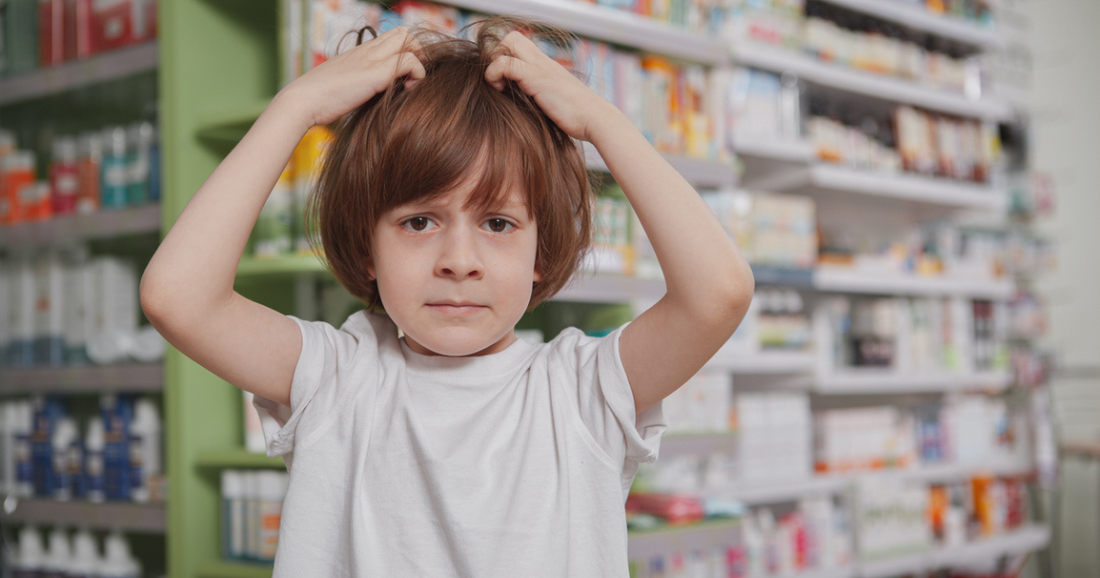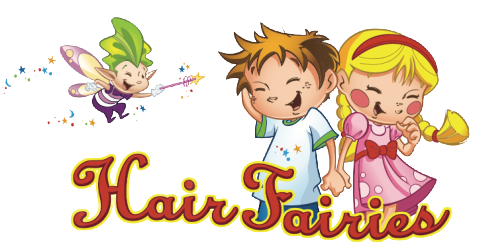
Natural vs. Chemical Lice Treatment
Share
Every parent dreads the letter home from school announcing a lice outbreak. The tiny, persistent pests have been a nuisance for generations, easily spreading and causing discomfort for those affected.
Head lice infestations, while common especially among school-aged children, require prompt attention to prevent further spread. When faced with the challenge of eliminating these uninvited guests, parents often find themselves at a crossroads: should they opt for natural remedies or go the chemical route?
In this guide, we explore the differences between natural and chemical lice treatments, empowering you with the knowledge to make an informed decision best suited for your family's needs.
The Downside of Chemical Lice Treatments

When faced with the immediate need to get rid of lice, the appeal of fast-acting chemical treatments is undeniable. These products, readily available at most drugstores, claim to be the solution for quick and effective eradication. Upon closer examination of the ingredients and their potential effects, certain concerns come to light that cannot be ignored.
Reduced Effectiveness Over Time
One of the major concerns with chemical lice treatments is the emergence of “super lice.” Much like antibiotic-resistant bacteria, these are strains of lice that have evolved to resist the effects of traditional over-the-counter treatments. This resistance is thought to have emerged from the frequent and widespread use of these products, rendering them less effective than they once were.
Health Concerns
Historically, some chemical treatments contained compounds like lindane, which was found to be highly toxic and linked to several health issues. Other chemicals found in popular lice treatments, such as permethrin and malathion, have raised health alarms. These chemicals are known neurotoxins and have been linked to respiratory problems, skin irritations, and even more severe health concerns.
Furthermore, some individuals (particularly children with sensitive skin) might experience allergic reactions such as redness, itchiness, or more severe symptoms.
Environmental Impact
Beyond personal health concerns, there’s the broader issue of the environmental impact. Many of these chemical treatments, when washed down the drain, can find their way into our water systems, posing potential hazards to aquatic life and the larger ecosystem.
The Promise of Natural Lice Treatments

In the wake of growing concerns about the drawbacks of chemical treatments, natural lice remedies have risen in popularity and credibility. Not only are they seen as a gentler option, but they also often align better with holistic health values and environmental consciousness. Here's what makes natural lice treatments an increasingly sought-after alternative:
Safety First
Unlike chemical treatments, which can sometimes contain harmful toxins, natural lice treatments rely on ingredients sourced from nature, reducing the risk of allergic reactions, skin irritations, and other health complications. With their non-toxic profiles, they're especially attractive for families with young children or members with sensitive skin.
Environmentally Responsible
Opting for natural lice treatments also means a reduced environmental footprint. These products, devoid of harmful synthetic chemicals, are biodegradable and don't contribute to water pollution when washed off.
Resistance Is Less Likely
While the battle against "super lice" rages on, these pests have yet to show significant resistance to natural treatments. This makes natural remedies a compelling choice for those looking for effective solutions that stand the test of time.
Holistic Care Approach
Beyond just eliminating lice, many natural treatments offer additional benefits. Ingredients like tea tree oil or peppermint oil not only deter lice but can also promote a healthy scalp, providing a more holistic approach to hair care.
Versatility and Ease
Many natural lice treatments are versatile and can be integrated into routine hair care. For instance, preventative shampoos or oils can be used regularly, making them a proactive measure against potential infestations.
Benefits of Comb-Out Method

The comb-out method, a cornerstone of many natural lice treatments, involves meticulous manual removal of lice and nits (eggs) using a fine-toothed comb, typically after applying a lubricating solution or conditioner. Despite its simplicity, it remains one of the most effective strategies in the fight against lice. Here are the key benefits of the comb-out method:
Chemical-Free Solution
The comb-out method is purely mechanical, meaning no chemicals or toxins come in contact with the scalp. This makes it an excellent option for those wanting to steer clear of potentially harmful substances.
Immediate Results
While chemical treatments often require time to work, the comb-out method offers instant gratification. With every pass of the comb, parents can physically see the lice and nits being removed, providing peace of mind that progress is being made.
Suitable for All Hair Types
Whether curly or straight, thick or thin, the comb-out method can be tailored to suit any hair type. It's an inclusive approach that doesn't discriminate.
Reduces Risk of Reinfestation
By physically removing both the lice and their eggs, the comb-out method effectively breaks the life cycle of the pests. This thorough approach ensures fewer chances of a reinfestation, as missed nits can't hatch and cause a resurgence.
Therapeutic and Bonding
While it requires patience, the act of combing can be therapeutic and a bonding activity between parent and child. It's a hands-on approach that can be turned into a calm and reassuring ritual.
Cost-Effective
Without the need to purchase multiple chemical treatments or potentially ineffective products, the comb-out method, particularly when paired with natural lubricating solutions, can be a more economical choice in the long run.
Maintenance and Prevention: Natural Methods

Preventing a lice infestation is infinitely preferable to treating one. Fortunately, natural methods can play a pivotal role in keeping these pesky intruders at bay. Here are some tried-and-true techniques to maintain a lice-free head and prevent future infestations:
Essential Oils
Some essential oils are reputed to repel lice, thanks to their distinct aromas that are unappealing to these pests. Oils such as tea tree, lavender, eucalyptus, and peppermint can be added to regular shampoos or diluted with water and sprayed onto the hair for a preventive shield.
Regular Screening
Regularly checking for lice, especially after learning of an outbreak in your child's school or circle, is essential. Using a fine-toothed comb on wet hair every week can help detect and address infestations early.
Natural Lice Prevention Products
There are natural lice-repellent sprays and shampoos available on the market, formulated with ingredients that deter lice. For instance, products like Nit-Zapping™ Clenz Shampoo and Nit-Zapping™ Lice Prevention Spray harness natural components to create a hostile environment for lice.
Boosting Scalp Health
A healthy scalp can be less inviting to lice. Regularly massaging with natural oils like coconut or jojoba can help maintain scalp health. These oils also make it harder for lice to grip the hair shafts.
Educate and Share
Teach children about the importance of not sharing personal items like combs, hats, and headphones. While sharing is a valuable lesson, in the case of lice prevention, a little self-preservation is essential.
Natural Housekeeping
Lice can linger on bedding, hats, and clothing. Using a natural laundry detergent with ingredients like eucalyptus, exemplified by the Heavy Duty Eucalyptus Laundry Detergent, can help ensure these items are not just clean, but also inhospitable to lice.
When to Seek Professional Help

Despite our best efforts, there are times when a lice infestation can become too overwhelming to handle at home. Recognizing when to seek the expertise of professionals can make the difference between prolonged discomfort and rapid relief. Here's when and why you might consider professional assistance:
Persistent Infestations
If you've tried multiple natural methods and the lice seem to persist, it might be time to call in the experts. Professionals have the experience to thoroughly comb out even the most stubborn of infestations.
Uncertainty in Identification
Not every itchy scalp equates to a lice infestation. Professionals can help confirm the presence of lice or nits, ensuring you're not treating your hair unnecessarily.
Convenience and Efficiency
While combing out lice at home can be effective, it's also time-consuming. Professionals offer quicker, more efficient services, ensuring every louse and nit is removed.
Comprehensive Treatments
Professional services often come with a more holistic approach, combining comb-out methods with natural treatments for optimal results. For instance, a salon visit to Hair Fairies includes not just the removal, but also guidance on maintenance and prevention tailored to your needs.
Home Visits and School Screenings
In situations where you're unable to visit a salon, professionals like Hair Fairies offer home visits for both lice screenings and removal. Additionally, for broader prevention, they provide school and camp screenings, helping to nip potential outbreaks in the bud.
Getting Rid of Lice Naturally

Facing a lice outbreak can be daunting, but remember, you're not alone. We've weighed the pros and cons of chemicals, sung the praises of natural remedies, and highlighted when it might be time to get professional help.
At the end of the day, it's about what's best for your family. Here's to making informed decisions, using a sprinkle of patience, and keeping those pesky critters at bay.
